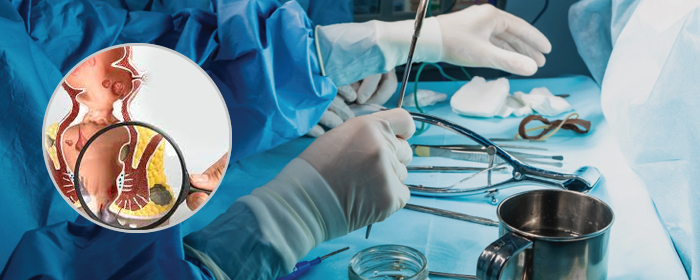Services
Fistula Surgery

An anal fistula is a small tunnel that connects an infected gland inside the anus to an opening on the skin around the anus. The anus is the external opening through which feces are expelled from the body. Just inside the anus are a number of small glands that make mucus. Occasionally, these glands get clogged and can become infected, leading to an abscess. About half of these abscesses may develop into a fistula.
What causes an anal fistula?
The leading causes of an anal fistula are clogged anal glands and anal abscesses. Other, much less common, conditions that can cause an anal fistula include:
Crohn’s disease (an inflammatory disease of the intestine)
Radiation (treatment for cancer)
Trauma
Sexually transmitted diseases
Tuberculosis
Diverticulitis (a disease in which small pouches form in the large intestine and become inflamed)
Cancer
What are the symptoms of an anal fistula?
The signs and symptoms of an anal fistula include:
Frequent anal abscesses
Pain and swelling around the anus
Bloody or foul-smelling drainage (pus) from an opening around the anus. The pain may decrease after the fistula drains.
Irritation of the skin around the anus from drainage
Pain with bowel movements
Bleeding
Fever, chills and a general feeling of fatigue
How is an anal fistula diagnosed?
We usually diagnose an anal fistula by examining the area around the anus. The surgeon will look for an opening (the fistula tract) on the skin. We will then try to determine how deep the tract is, and the direction in which it is going. In many cases, there will be drainage from the external opening.
Some fistulas may not be visible on the skin's surface. In this case, your physician may need to perform additional tests:
An anoscopy is a procedure in which a special instrument is used to see inside your anus and rectum.
We may also order an ultrasound or MRI of the anal area to get a better view of the fistula tract.
Sometimes surgeon will need to examine you in the operating room (called exam under anesthesia) to diagnose the fistula.
If a fistula is found, We may also want to do further tests to see if the condition is related to Crohn's disease, an inflammatory disease of the intestine. About 25% of people with Crohn's disease develop fistulas. Among these studies are blood tests, X-rays and colonoscopy. A colonoscopy is a procedure in which a flexible, lighted instrument is inserted into the colon via the anus. It is performed under conscious sedation, a type of light anesthetic.
Treatment
Surgery is almost always necessary to cure an anal fistula. The surgery is performed by a colon and rectal surgeon. The goal of the surgery is a balance between getting rid of the fistula while protecting the anal sphincter muscles, which could cause incontinence if damaged.
Fistulas in which there is no or little sphincter muscle involved are treated with a fistulotomy. In this procedure, the skin and muscle over the tunnel are cut open to convert it from a tunnel to an open groove. This allows the fistula tract to heal from the bottom up.
In the case of a more complex fistula, the surgeon may have to place a special drain called a seton, which remains in place for at least 6 weeks. After a seton is placed, a second operation is almost always performed: A fistulotomy, or An advancement flap procedure (the fistula is covered with a flap, or piece of tissue, taken from the rectum, like a trap door), or A lift procedure (the skin above the fistula is opened up, the sphincter muscles are spread, and the fistula is tied off).